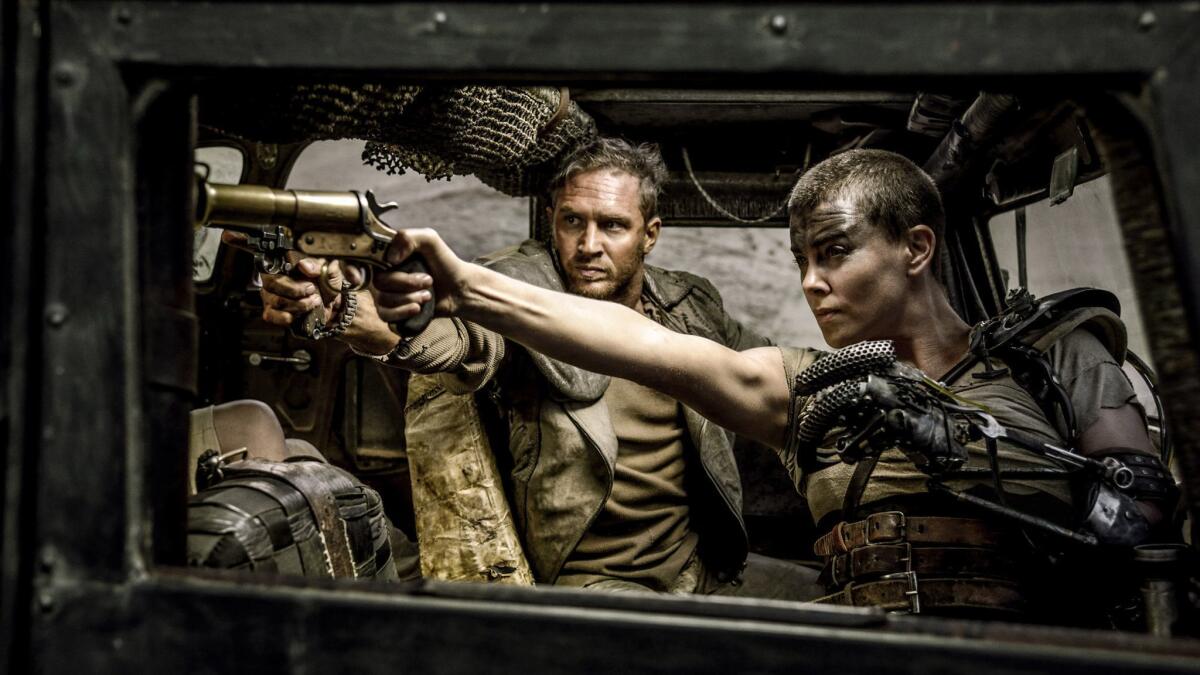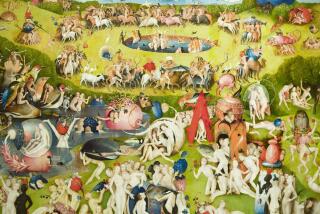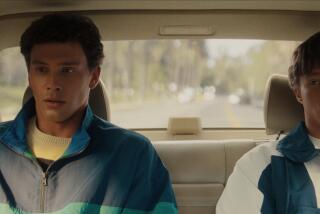The monster inside us: How movies and TV have made the case against humans
When President Trump mocked Christine Blasey Ford at a rally in Mississippi earlier this month, the crowd, which presumably included rape victims, as well as mothers, fathers and other relatives of rape victims, roared its approval and greeted his parody of her testimony with laughter. Shocked, columnist Charles Blow wondered in the New York Times, “… how are there so many Americans willing to accept Trump’s corrosion of our culture and our discourse, to gleefully follow him as he plumbs the depths …”
On reflection, if you’ve been watching our movies and TV, there was nothing surprising about it. They have been denouncing humans for some time. As a character in AMC’s long-running zombie series, “The Walking Dead,” put it, “All this time running from walkers, you forget what people do.”
First on the bill of attainder is that people are planetary litterers, serial polluters, pissers in their own pond. Once upon a time, Earth was the envy of the universe, a lush green world that was repeatedly set upon by aliens from “shithole” planets who had carelessly burned through their raw materials and were trying to help themselves to ours. They wanted what we had, and didn’t hesitate to help themselves, like the ocean suckers in 2011’s “Battle Los Angeles.” In NBC’s “The Event” (2010-11), the advanced inhabitants of a dying civilization plot to exterminate the human race to make room for their entire population of undocumented aliens pouring through one of those ubiquitous portals that have turned our world into Swiss cheese. Fortunately, the show was dropped before they could implement their plan.
Now, however, the traffic is going in the other direction. It turns out that humans have made a mess of the planet, and it’s our turn to hightail it to other worlds in search of greener pastures. In Neill Blomkamp’s “Elysium” (2013), Earth has been reduced to a ruined husk, ravaged, as a title card tells us, by “disease and pollution.” Anyone who can afford to has gotten the hell out. White flight has taken on a lunar dimension. The 1% have fled to an orbiting Malibu that hangs in the sky like a glistening Mercedes hood ornament, while Earth has been turned into a factory planet where the 99% left behind have become drones servicing the so-called ring-world in the sky.
It turns out that humans have made a mess of the planet, and it’s our turn to hightail it to other worlds.
A year later in “Interstellar” (2014), Stephen Hawking’s remark, “Our only chance of long-term survival is not to remain inward-looking on planet Earth, but to spread out into space,” has sent Matthew McConaughey on a lengthy journey through space in search of a new home for humans escaping a planet-wide blight. If characters can’t put some physical distance between themselves and Earth, in shows like Steven Spielberg’s “Terra Nova” (2011) they jump back in time, to an era before everything went sideways. Humans from the year 2149, when the planet is beggared by too many people and too little food, choked by pollution and starved of natural resources, transport themselves to a Jurassic world, where they find that living cheek by jowl with raptors is preferable to their life in the future.
If escape is not an option, people plunder other worlds for ore and minerals, bringing them back home where they sell them for a tidy profit, as they do in the “Alien” franchise and “Avatar” (2009). What happened to that lush, green planet? Humans happened.
SPECIAL REPORT | Midterms 2018: How politics and the arts are colliding
How Humans used to be the measure of all things. “What a piece of work is man!” Hamlet famously mused. “How noble in reason! How infinite in faculty! … In action how like an angel.” The Bible may have cautioned Adam and Eve against that apple, and warned against pride and a grab bag of other sins, but Hamlet was only affirming the judgment of Genesis, which privileged humans above all, asserting, “God created mankind in his own image.”
If ever there was a time to question the humanity of humans, it was after World War II, when the full scope of Nazi atrocities was first revealed. But the good guys, after all, had won the war and America, virtually the last nation standing, rode the crest of a worldwide wave of heady optimism, the result of which were new institutions like the United Nations. A collection of photographs assembled by Edward Steichen called “The Family of Man,” was a testimony to our common humanity that the Nazis had done so much to destroy. It opened at the Museum of Modern Art in 1955 and toured the world. It was seen by an estimated 9 million people.
Science, meanwhile, freeing humans from religious dogma, affirmed human exceptionalism. Ever since Darwin, humans have been regarded as the ripest fruit of evolution. Thus, the creatures that inhabit our myths, fantasies and fairy tales, from Pinocchio to the Tin Woodman of Oz, all aspired to be human. And who can blame them? Simply put, humans were the be all and end all of creation.
On the pop culture front, in the same way that invaders from outer space were eager to make off with Earth’s oil and uranium, or just breathe our fresh air, so they too couldn’t wait to avail themselves of the pleasures of being human, as they did in Robert Heinlein’s 1951 novel “Puppet Masters,” translated to the screen in movies like “Invasion of the Body Snatchers” (1956, 1978).
The mainstream still heroizes humans, but the extremist shows of the new century that have overwhelmed them strip away the cloak of virtue in which humans have traditionally wrapped themselves. In “Fantastic Beasts and Where to Find Them” (2016), Newt Scamander (Eddie Redmayne), anxiously describing the plight of the endangered beast species he’s rescuing, says, “They’re currently in alien terrain surrounded by millions of the most vicious creatures on the planet: humans.”
In “X-Men: First Class” (2011), standing on a beach facing American and Soviet warships in the film’s version of the Cuban Missile Crisis, mutant Erik/Magneto gets to the heart of the matter when he says that these mortal enemies are basically identical: both “humans,” the same species. Ditto the warring Americans and North Vietnamese gathered in Paris for the peace accords in “X-Men: Days of Future Past” (2014).
In “The Walking Dead,” the distinction isn’t between nationalities but something more fundamental, the living and the dead. The choice may seem obvious, but it’s not. As zombie godfather George Romero once put it, “In my work, [it’s] usually the humans that are the worst. … I have a soft spot in my heart for zombies.” Indeed, the parade of cannibals, homicidal tyrants and treacherous killers who populate “The Walking Dead” make zombies seem almost benign.
In “The Dark Knight” trilogy, humans are also on trial. The League of Shadows has marked Gotham for destruction because humans are too far gone to save, and indeed, it is a sewer of corruption. Batman, however, demurs, clinging to the mainstream’s sunnier view of humans. Who’s right, the League or Batman?
For awhile, the trilogy seems to blame corruption that gnaws at the moral fiber of Gotham on the poor. The rabble-rousing villain of “The Dark Knight Rises” (2012) empties Gotham’s prisons and inspires the newly freed riffraff, the 99%, to rise up against the rich. Is Gotham’s venality, then, a class issue? It seems so, until the Catwoman warns wealthy playboy Bruce Wayne, “There’s a storm coming. When it hits, you’re all gonna wonder how you ever thought you could live so large and leave so little for the rest of us.”
Thus, the film seems to blame the evil it anatomizes on the rich and the poor, the haves and the have-nots, the 1% and the 99%, in other words: everyone. And if everyone is culpable for the corruption that pervades not only Gotham, but every government institution in the DC universe, on which color will the bouncing ball of blame land?
Enter the Joker, who takes the League’s side. To prove his point, the grinning trickster devises an ingenious experiment intended to expose humans for the beasts they are. As he tells Batman, “When the chips are down … these civilized people, they’ll eat each other.” He loads one ferry with convicts and another with law-abiding citizens. Both vessels are wired with explosives, but the detonator for each is on the other. If the convicts don’t blow up the citizens (or vice versa) by midnight, the Joker threatens to obliterate both. As it turns out, neither the law-breakers nor the law-abiders detonate their opposite numbers, forcing the Joker to reluctantly concede that Batman is right, people are basically good, and therefore Gotham is worth saving.
The Joker, however, is a poor oddsmaker. Too infatuated with his own cleverness and too busy tormenting his humorless, square-jawed opponent to do the numbers, he misses the point. The convicts, on message, indeed choose to blow up the 1%. The surprise is that Gotham’s prosperous burghers vote to sink the convicts. Each group is only prevented from obliterating the other by chance. The Joker’s experiment proves that there isn’t much to distinguish the good citizens of Gotham from the bad convicts of Gotham’s jails, because they all behave the same way — badly. The X-Men would agree.

In mainstream shows, humans dehumanized by the extreme circumstance in which they find themselves, like Mad Max in “Fury Road” (2015), eventually make their way back to the human within them. Since they’re mostly men, this takes the form of escaping their usual gender roles. Over the course of the first few seasons of “The Walking Dead,” when he’s not going off the deep end, Rick, in contrast to his brutish pal Shane, continually seeks support and reassurance from his wife. In “Game of Thrones,” it doesn’t take Freud to recognize that bad guy Jaime Lannister, who throws poor Bran Stark off a parapet and cripples him for life, becomes good guy Jaime Lannister by virtue of losing an arm. In the seventh season, Jon Snow, King of the North, in contrast to the show’s full house of toxic males like rapist Ramsay Bolton, bends the knee to Daenerys Targaryen.
Even Bruce Wayne, in a centrist twist to an extremist trilogy, hangs up his Batsuit to sip cappuccino with the Catwoman in a sidewalk cafe in Italy.
Extreme culture turns mainstream culture on its head. What is good for the mainstream is bad for the extremes, and vice versa. If the mainstream vilifies aliens and outsiders as beasts or monsters, the extremes heroize beasts and monsters. After all, the Romantics taught us that savages are noble. In “X-Men: First Class,” mutant Erik/Magneto travels to Argentina looking for the Mengele stand-in who murdered his mother. When he finds himself in a rats’ nest of Nazi émigrés and is asked his name, he replies, “Let’s just say I’m Frankenstein’s monster. And I’m looking for my creator.”
Even the devil gets a makeover. As Gilfoyle puts it in “Silicon Valley”: “There are very few things I will defend with true passion. Medical marijuana … crypto currency, and the biblical Satan as a metaphor for rebellion against tyranny.”
Also in “First Class,” X-Woman Raven worries that she’s ugly, and indeed, she does look like a monster. Yellow cat’s eyes peer out from a turquoise face topping a body covered with scars and scales from head to foot — in all but color like Michael Gambon in the 1986 BBC miniseries “The Singing Detective,” disfigured by full-body psoriasis. But eventually, she embraces her otherness. “We are different, and we shouldn’t be trying to fit into society,” she says. “Society should aspire to become more like us. Mutant and proud.”
Moreover, in extreme shows, escaping gender is not enough. Humans need to escape the human. Supes and superheroes like Raven become whole by accepting what they are, beasts and monsters. Moreover, in the same way that outbound traffic from Earth has exceeded inbound traffic, so it is that humans, fed up with their own species, no longer waited passively for the pods and blobs to have their way with them, but rather, beat them to the punch, making a beeline for alien life forms.
Body snatchers, in other words, gave way to body ditchers. They are desperate to leave the species. In “Avatar,” not only does the hero Jake Sully (Sam Worthington), an ex-Marine confined to a wheelchair, turn against the company that employs him, and against his fellow soldiers whom the company uses to do its dirty work, but worst of all, he turns against his fellow Homo sapiens. At the end of the movie, he melds with a 10-foot-tall blue alien.
“Avatar” seems to be saying that humans, the species, like its hero, are hopelessly crippled, while random aliens inhabiting an obscure moon in a remote galaxy are both morally and physically superior. And “Avatar,” remember, released nine years ago, is still the highest-grossing movie of all time, and about to be followed by four sequels.
In “The Shape of Water,” best picture winner at this year’s Oscars, the heroine, lightly disfigured by three parallel scars on her neck, helps a creature kidnapped by the U.S. Army in hopes of weaponizing it escape into the ocean. Not only that, she joins him in the water, enjoying a romantic moment of submarine love. Moreover, hers is no one-fathom stand; the three scars turn into gills, as she abandons air for water, the human for the aquatic, to live happily ever after with a monster. Like Jake Sully, she betrays her species.
Even in a more traditional movie like the review-proof “Venom” (2018), Tom Hardy’s eponymous symbiote, who takes over a human host in much the same way that the pods do in “Invasion of the Body Snatchers,” doesn’t dehumanize him, depriving him of emotion, as they do in that earlier film. Rather, the symbiote becomes humanized itself, at least partially. The human host is less victim than collaborator. The relationship, after all, is symbiotic.
According to director Ruben Fleischer, Venom and its host, unlike Jekyll and Hyde, are a “hybrid,” two characters sharing a common body and working together. One of the characters says something like, “Look around at the world. What do you see? A planet on the brink of collapse. Human beings are disposable. But man and symbiote combined, this is a new race, a new species ... a higher life form.”
If this survey of today’s extreme culture tells us anything, it is that humans have worn out their welcome. With their reputation tarnished beyond recognition, it should come as no surprise that Trump’s campaign for now-Justice Brett M. Kavanaugh at the expense of Christine Blasey Ford fell on receptive ears. After all, as one character in HBO’s late, great vampire series “True Blood” puts it, “People are scum.”
MORE POLITICS AND THE ARTS
A week of hate crimes shines a harsh spotlight on the troubling tribalism of social media
Did Trump get his philosophy of revenge from Clint Eastwood?
Sign up for our weekly Indie Focus newsletter »
More to Read
The biggest entertainment stories
Get our big stories about Hollywood, film, television, music, arts, culture and more right in your inbox as soon as they publish.
You may occasionally receive promotional content from the Los Angeles Times.










